Single-Phase Induction Motors
Single-phase induction motors play a big role in modern electrical systems because they are easy to use, reliable, and cost-effective. They run on single-phase alternating current (AC) and are widely used in household and commercial appliances such as fans, washing machines, and vacuum cleaners. These motors change electrical energy into mechanical energy through electromagnetic induction. Even though their design is simple, they face challenges like the inability to start on their own, which is solved using mechanisms like capacitors and auxiliary windings. This article looks at the construction, working principles, advantages, disadvantages, and applications of single-phase induction motors, providing a full understanding of their operation and importance.Catalog
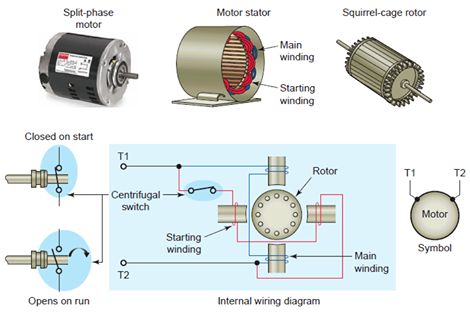
Figure 1: Single-Phase Induction Motor Overview
What Is Single-Phase Induction Motors
A single-phase induction motor is an electric motor that runs on single-phase alternating current (AC). These motors convert electrical energy into mechanical energy using electromagnetic interactions. They are common in home appliances like fans, washing machines, vacuum cleaners, and more because they are simple to build and easy to maintain.
A single-phase induction motor operates on a single-phase power supply system, which is more common in homes and businesses than three-phase systems. These systems are more affordable and meet the lower power needs typical in houses, shops, and offices. The design of single-phase induction motors is straightforward, making them cost-effective, reliable, and easy to maintain. Because of these benefits, they are widely used in appliances such as vacuum cleaners, fans, and washing machines, as well as in devices like centrifugal pumps and blowers.
When starting a single-phase induction motor, it is connected to a single-phase power supply. Since single-phase motors cannot start on their own, they need a starting mechanism, like a capacitor or auxiliary winding. This mechanism creates a phase shift, making a rotating magnetic field that induces current in the rotor. Once the motor starts, the starting mechanism, often a capacitor or auxiliary winding, is usually disconnected by a centrifugal switch or electronic relay. The motor then runs only on the main winding. During operation, the rotor follows the rotating magnetic field created by the stator, causing the motor to turn.
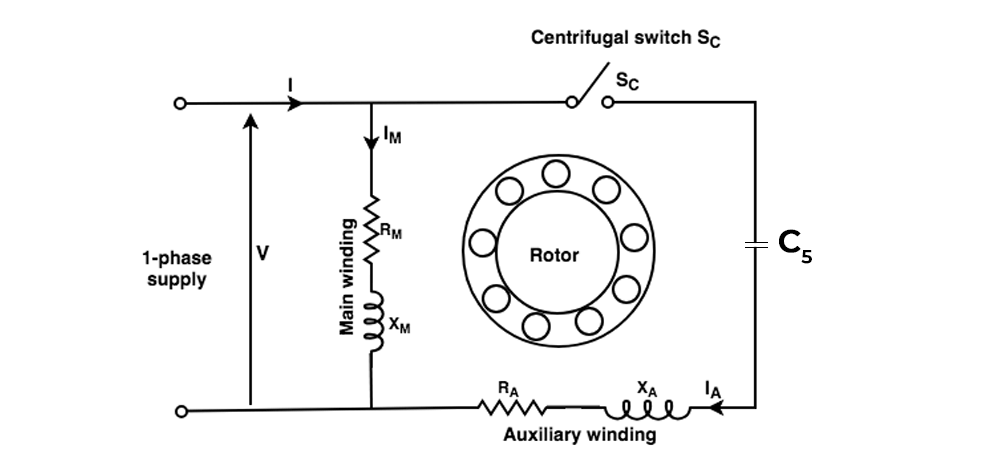
Figure 2: Single-Phase Induction Motor Diagram
Construction of Single-Phase Induction Motors
The construction of a single-phase induction motor includes two main parts: the stator and the rotor. Each part plays a key role in the motor's functionality.
Stator
The stator is the non-moving part of the motor and has coils that receive the AC power supply. The stator of a single-phase induction motor is made of thin steel sheets to reduce energy loss. These sheets have slots that hold the stator or main coil. Silicon steel is usually used for these sheets to reduce energy loss due to magnetism.
The stator has two coils: the main coil and the auxiliary coil. The main coil creates the magnetic field that induces current in the rotor, while the auxiliary coil helps create a phase shift in the magnetic field, aiding in starting the motor. This coil is placed at a 90-degree angle to the main coil.
Rotor
The rotor is the part of the motor that spins and moves the mechanical load through the shaft. In single-phase induction motors, the rotor is usually of the squirrel cage type. This type has aluminum or copper bars placed in a round core. These bars are connected at both ends by end rings, forming a loop, which is why it’s called a "squirrel cage." The rotor is built with these bars acting as conductors, and the end rings connect them at both ends. The slots holding the bars are slanted to lower noise and prevent magnetic locking.

Figure 3: Squirrel Cage Rotor Design
Working Principle of Single-Phase Induction Motors
Single-phase induction motors work through electromagnetic induction. When connected to a single-phase AC power supply, the stator winding creates a changing magnetic field. This field induces a current in the rotor, which then forms its own magnetic field. The interaction between these magnetic fields produces the force needed to rotate the rotor.
The alternating magnetic field in the stator, driven by the AC supply, induces an electromotive force (EMF) in the rotor conductors based on Faraday's Law of Electromagnetic Induction. This induced EMF generates currents in the rotor bars, typically made of aluminum or copper. These currents create a secondary magnetic field around the rotor bars. The interaction between the stator's and rotor's magnetic fields generates a force, known as Lorentz force, which produces the torque to spin the rotor.
The motor reaches a steady state where the rotor speed is slightly less than the synchronous speed of the stator's magnetic field. This speed difference, called slip, is needed for the continuous induction of current in the rotor, keeping the motor running. As long as the AC power supply is present, this process continues, driving the motor's rotation.
To start the motor, mechanisms such as capacitors or auxiliary windings are used to create an initial phase shift, generating a rotating magnetic field to start the rotor. Once the rotor gains enough speed, these starting aids are usually disconnected, allowing the motor to run on the main winding. Regular maintenance, including checking the load and ensuring proper ventilation, helps prevent issues like overheating and mechanical wear, ensuring good performance and long life.
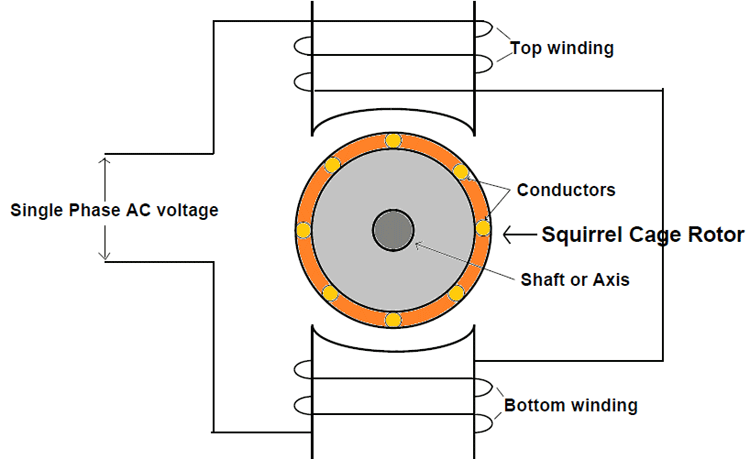
Figure 4: Electromagnetic Induction in Single-Phase Induction Motors
Why Single-Phase Induction Motors are Not Self-Starting
Unlike three-phase motors, single-phase induction motors cannot start by themselves. This is because the single-phase alternating current creates a shaking magnetic field instead of a spinning one. This shaking field acts like two magnetic fields spinning in opposite directions with equal strength. When the motor tries to start, these fields cancel each other out, causing no force to turn the rotor.
According to the double field revolving theory, any alternating current can be divided into two parts. Each part has half the strength of the original current, and they rotate in opposite directions. For example, a magnetic flux, φ, can be split into two parts: one moving forward and the other moving backward. When starting, these parts are equal in strength but move in opposite directions, canceling each other out and creating no force to turn the rotor.
Building a Two-Phase Motor to Solve Single-Phase Issues
To fix the single-phase problem, a good way is to make a two-phase motor that can create two-phase power from a single-phase supply. This means designing a motor with two coils that are placed 90 degrees apart electrically. These coils are then given two phases of current that are also shifted by 90 degrees in time.
This type of motor is called a permanent-split capacitor motor. The key to its working is the use of a capacitor, which creates the needed phase shift between the currents in the two coils. By making this phase shift, the motor can produce a rotating magnetic field, similar to what would be made by a true two-phase power supply.
The result is a motor that can start and run well on a single-phase supply while copying the performance of a two-phase motor. This method fixes the problems of single-phase motors, which often have trouble with starting power and smooth operation. The permanent-split capacitor motor mixes the simplicity and availability of single-phase power with the better performance of a two-phase motor system.
Permanent-Split Capacitor Motors
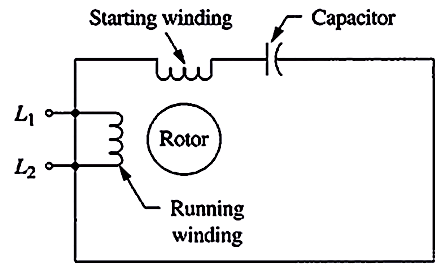
Figure 5: Permanent-Split Capacitor Motors
Permanent-split capacitor motors use a capacitor that is always connected in series with the auxiliary winding. This setup creates a phase shift for both starting and running, allowing the motor to start and run efficiently. These motors are simpler and more reliable because they do not have a switch. They have two windings (main and auxiliary) spaced 90 degrees apart. The capacitor provides the needed phase shift to create a rotating magnetic field.
However, this type of motor experiences increased current and backward time shift as it speeds up, causing torque pulsations at full speed. To solve this, the capacitor is kept small to minimize losses. The losses are less than those of a shaded pole motor, and this configuration works well up to 1/4 horsepower (200 watts). The direction of the motor is easily reversed by switching the capacitor in series with the other winding. These motors are used in ceiling fans, blower fans, and office machinery.
Starting Methods for Single-Phase Induction Motors
To solve the problem of self-starting in motors, various techniques are used to create an initial rotating magnetic field. These methods include split-phase induction motors, capacitor-start induction motors, capacitor-start capacitor-run induction motors, permanent-split capacitor motors, and shaded-pole motors.
Split-Phase Induction Motors
Split-phase induction motors use two windings: a main winding and an auxiliary winding, placed 90 degrees apart. The auxiliary winding has higher resistance and lower inductive reactance, causing a phase shift between the currents in the two windings. This phase shift creates a rotating magnetic field, allowing the motor to start.
During operation, both windings are energized to start the motor. Once the motor reaches about 70-80% of its full speed, a centrifugal switch disconnects the auxiliary winding. The motor then continues to run on the main winding. These motors are used in fans, blowers, and small machine tools.
Capacitor-Start Induction Motors
In capacitor-start motors, a capacitor is connected in series with the auxiliary winding. This capacitor improves the phase shift between the currents in the main and auxiliary windings, providing higher starting torque. A centrifugal switch disconnects the auxiliary winding once the motor reaches a certain speed. These motors are used in applications requiring a significant initial torque, such as air compressors, pumps, and refrigerators.
Capacitor-Start Capacitor-Run Induction Motors
Capacitor-start capacitor-run motors use two capacitors: a starting capacitor for high starting torque and a running capacitor for improved performance. The starting capacitor provides high starting torque, while the running capacitor remains in the circuit to improve running efficiency. The starting capacitor is disconnected by a centrifugal switch once the motor reaches the desired speed. These motors are used in refrigerators, air conditioners, and heavy-duty pumps.
Shaded-Pole Motors
Shaded-pole motors use copper rings (shading coils) around a part of the pole piece. These shading coils create a delayed magnetic field, producing a rotating effect that helps start the motor. These motors are simple and inexpensive but offer low starting torque and efficiency. Shaded-pole motors are used in small devices like fans, hairdryers, and small pumps.
Comparison between Single-Phase and Three-Phase Induction Motors
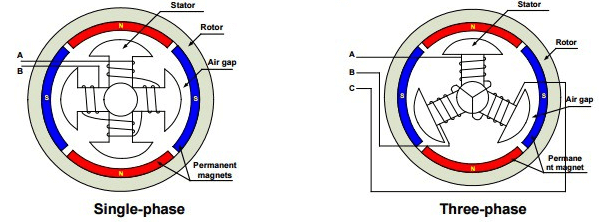
Figure 6: Single-Phase and Three-Phase Induction Motors
Single-phase induction motors are quite different from three-phase induction motors in terms of build, performance, and efficiency. Single-phase motors have a simpler design with fewer windings. This makes them smaller and cheaper, but they don't perform as well and are less efficient. Single-phase motors have a lower power factor because they don't have a continuously rotating magnetic field. This means they draw more current to produce the same power output compared to three-phase motors. In contrast, three-phase motors use all three windings continuously, which improves the power factor and reduces the current draw for the same power output.
For the same size, a three-phase motor can produce more power because it uses all three windings at once, while a single-phase motor uses only one winding at a time. This constant use of all windings in three-phase motors allows for a better conversion of electrical power into mechanical power. Three-phase motors generate higher starting torque because of the continuous rotating magnetic field created by the three-phase supply. Single-phase motors need extra parts, like capacitors or auxiliary windings, to create enough starting torque. These starting parts create an initial phase shift to produce a rotating magnetic field needed to start the rotor's movement.
Three-phase motors are more efficient because they share the electrical load across three windings. This sharing reduces the current per winding, lowering electrical losses and heat buildup. Single-phase motors have higher losses because of the pulsating magnetic field, which leads to more electrical resistance and heat in the windings. Practically, three-phase motors are better for industrial and commercial uses where high power and efficiency are needed. They run more smoothly, have higher starting torque, and perform better overall. Single-phase motors are good for smaller, low-power uses but need careful attention to starting methods and load management to run reliably. Regular maintenance is needed to minimize the higher losses and prevent overheating issues that come with single-phase motors.
Equivalent Circuit of Single-Phase Induction Motors
The equivalent circuit of a single-phase induction motor is created using the double-field revolving theory or cross-field theory. These theories help us understand how the motor works under different conditions.
Double-Field Revolving Theory
This theory says that any alternating quantity can be split into two parts that rotate in opposite directions. In a single-phase induction motor, the main magnetic field can be divided into two components moving in opposite directions. These components interact with the rotor to produce the required torque. The equivalent circuit parameters include the resistance of the main winding (R1m), the leakage reactance of the main winding (X1m), the magnetizing reactance (XM), the standstill rotor resistance referred to the main winding (R2’), and the standstill rotor leakage reactance referred to the main winding (X2’).
Cross-Field Theory
Cross-Field Theory looks at how the rotor's movement affects the stator's magnetic field, which is important for understanding motor behavior. By studying this interaction, we can figure out the equivalent circuit parameters to analyze and predict motor performance. The equivalent circuit includes the stator resistance (R1), stator reactance (X1), rotor resistance (R2') referred to the stator side, rotor reactance (X2') referred to the stator side, and magnetizing reactance (Xm).
This circuit makes it easier to analyze current, voltage, power factor, efficiency, and torque. It helps us understand how the motor starts and runs. Engineers use the equivalent circuit to improve design, diagnose faults, and develop control strategies for speed and torque regulation. Understanding this circuit is important for designing, operating, and maintaining single-phase induction motors, which enhances their performance in different applications.
Advantages and Disadvantages of Single-Phase Induction Motors
Single-phase induction motors are very popular in homes and businesses because they are simple, reliable, and not too expensive. Knowing where they are used, their good points, and their bad points can help you pick the right motor for what you need.
Single-phase induction motors are used in many things because they are simple and reliable. They are found in household appliances such as fans, washing machines, vacuum cleaners, and refrigerators. In pumps, they are used in water pumps and sump pumps. Compressors use these motors in air compressors and refrigeration compressors. Blowers powered by these motors are used in HVAC systems. Food processors such as mixers, grinders, and blenders also use single-phase induction motors. These motors are chosen for these applications because they work well and last a long time.
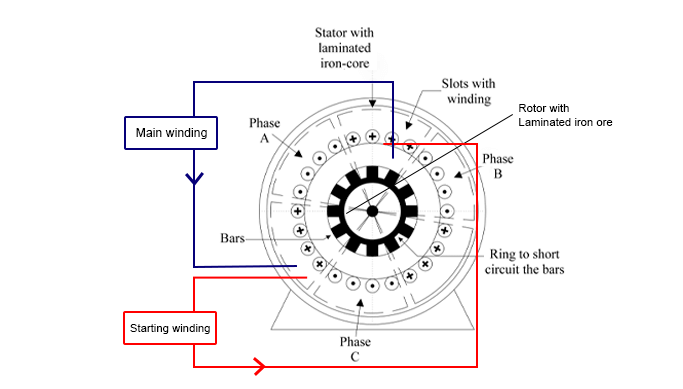
Figure 7: Common Applications of Single-Phase Induction Motors
Advantages of Single-Phase Induction Motors
Single-phase induction motors are liked for many reasons. They are built simply, making them easy to take care of and cheaper to make and buy, which saves money. These motors come in different sizes and power levels, making them useful for many jobs. They are built to last a long time and work reliably, which means they don't break down often. Because they are affordable, easy to find, and strong, many people choose single-phase induction motors for various uses.
Disadvantages of Single-Phase Induction Motors
Single-phase induction motors have some downsides. They use more energy compared to three-phase motors to do the same job, which makes them less efficient. They also struggle with tasks that need high starting power unless extra parts are added. For high-power needs, they are not the best choice because they can't handle as much power as three-phase motors.
Conclusion
Single-phase induction motors are widely used in homes and businesses because they have a simple design and work well. They are affordable and easy to take care of, making them good for small tasks. Even though they need extra help to start on their own, improvements like permanent-split capacitors have made them better. When comparing them to three-phase motors, you can see their specific uses and limits. Using equivalent circuit models helps improve how they work and find problems. As technology grows, these motors will work more with smart systems and the Internet of Things (IoT), making them more useful and reliable. Knowing about single-phase induction motors helps in choosing the right motor for specific tasks and making sure they run smoothly.
Frequently Asked Questions [FAQ]
1. What are the characteristics of a single-phase motor?
Single-phase motors are often used in homes and small businesses because they are simple, easy to use, and not too expensive. They have less power compared to three-phase motors, making them good for light tasks like running fans, refrigerators, and washing machines. These motors need a starting device because they can't start by themselves. They are reliable and can last a long time when used properly.
2. What is the basic method to start a single-phase induction motor?
To start a single-phase induction motor, you connect it to a single-phase power source. Since it can't start on its own, a starting device like a capacitor or extra winding is used. This device creates a phase shift, making a rotating magnetic field that gets the rotor moving. Once the motor reaches a certain speed, the starting device is turned off by a switch or relay, and the motor runs on the main winding.
3. What is the working principle of an induction motor?
An induction motor works through electromagnetic induction. When AC power is applied to the stator winding, it creates a changing magnetic field. This field induces an electromotive force (EMF) in the rotor, causing currents to flow in the rotor bars. The interaction between the stator's magnetic field and the currents in the rotor creates a force that makes the rotor spin. The rotor keeps following the rotating magnetic field made by the stator.
4. What is the major difference between three-phase motors and single-phase motors?
The main difference is in their power supply and use. Three-phase motors use a three-phase power supply, giving more power and efficiency, making them suitable for heavy industrial tasks like running conveyor belts and large machines. Single-phase motors use a single-phase power supply and are used for lighter tasks in homes and small businesses, like running household appliances. Three-phase motors can start by themselves, while single-phase motors need an extra starting method.
5. What are the precautions for single-phase induction motors?
When using single-phase induction motors, make sure they are installed correctly with secure electrical connections and proper grounding. Regularly check the starting device to ensure it works reliably. Avoid overloading the motor to prevent overheating and damage. Ensure the motor has enough ventilation to stay cool, and do regular maintenance to check for wear and tear. Always connect the motor to the correct voltage and frequency as specified by the manufacturer to avoid electrical problems. These steps help the motor run safely and efficiently, making it last longer.